Preserving fresh grape leaves in brine is very rewarding when it comes to flavor. And if you enjoy dishes like Dolmadakia and can actually find fresh grape leaves you should definitely preserve them in brine to enjoy all year round!
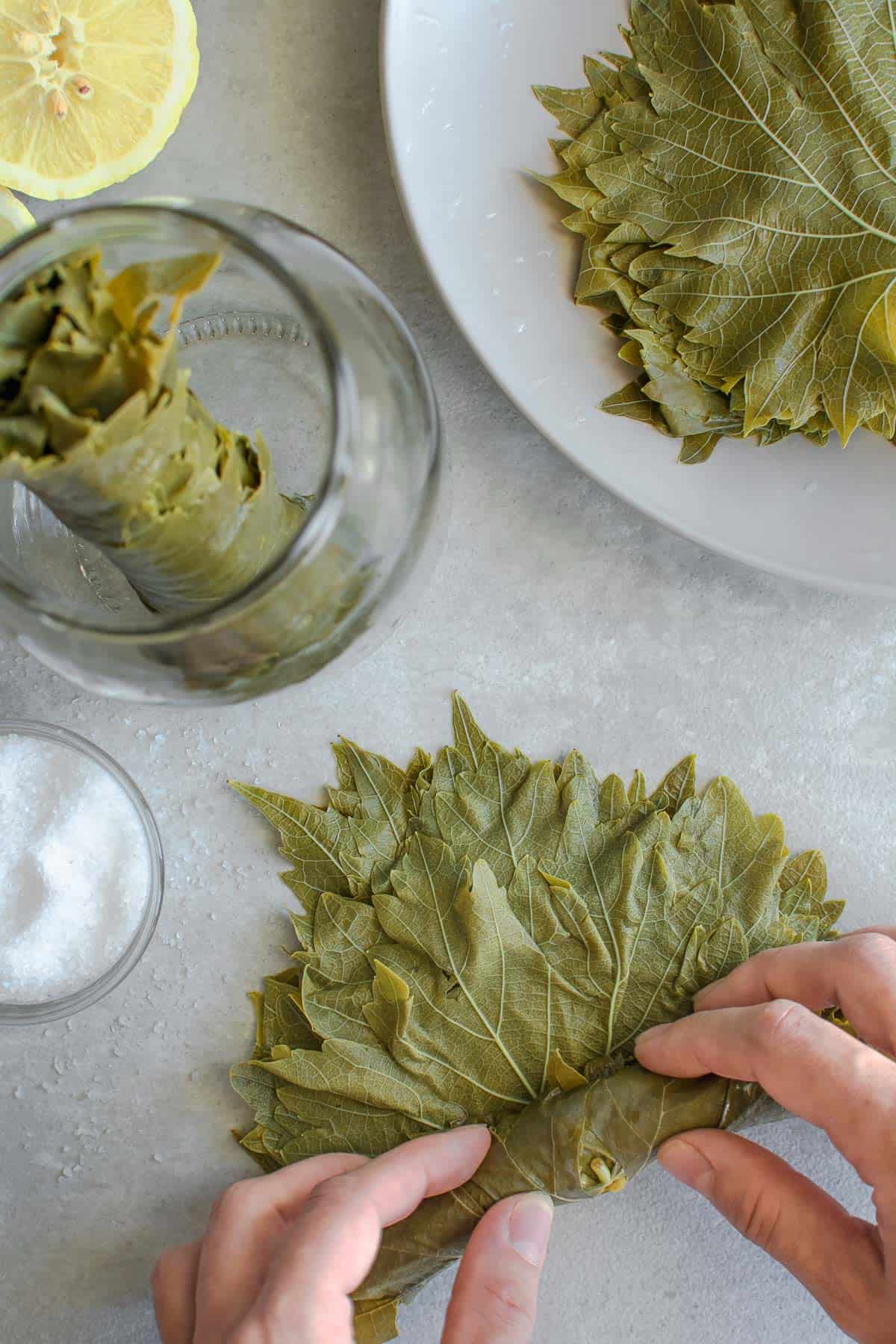
You needn't even keep them in the fridge. Just store the jar in a dark cupboard for up to a year.
When To Harvest Grape Leaves
It is best to harvest grape leaves during mid-spring to early summer. Depending on where you leave in the world and how warm the climate is.
Picking The Right Leaves
The right grape leaves to harvest are the ones that are light green in color and feel tender to the touch. They should be at least 4 + 1⁄2 inch to 5 inches long (12-13 cm) so you can easily stuff them.
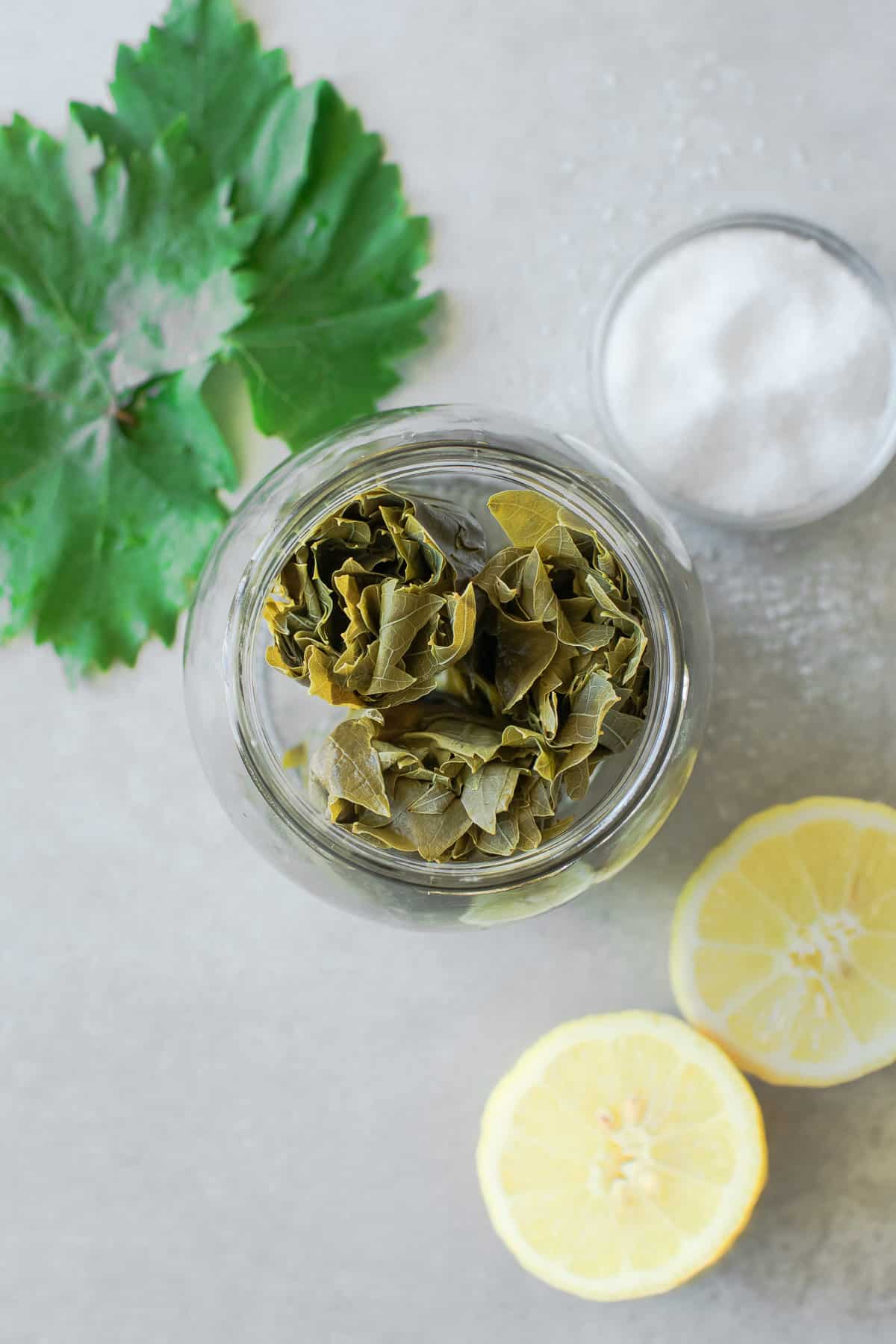
How To Preserve Grape Leaves In Brine
To preserve the leaves you need to blanch the leaves first. To do this you first dip them in boiling water for a couple of minutes and then transfer them to very cold water. This ensures that a). all bacteria that may be on the leaves die, and b). the leaves keep a firm texture.
Second, you make a quick brine with lemon juice, red wine vinegar, and salt. Place the leaves into stacks, then roll them into cylinders and place them in a tall jar that fits them. Cover with the brine ensuring that it doesn't reach all the way to the top and touch the jar's lid. Then add a little bit of olive oil. The olive oil will float on top creating an extra layer of protection against microorganism invasions.
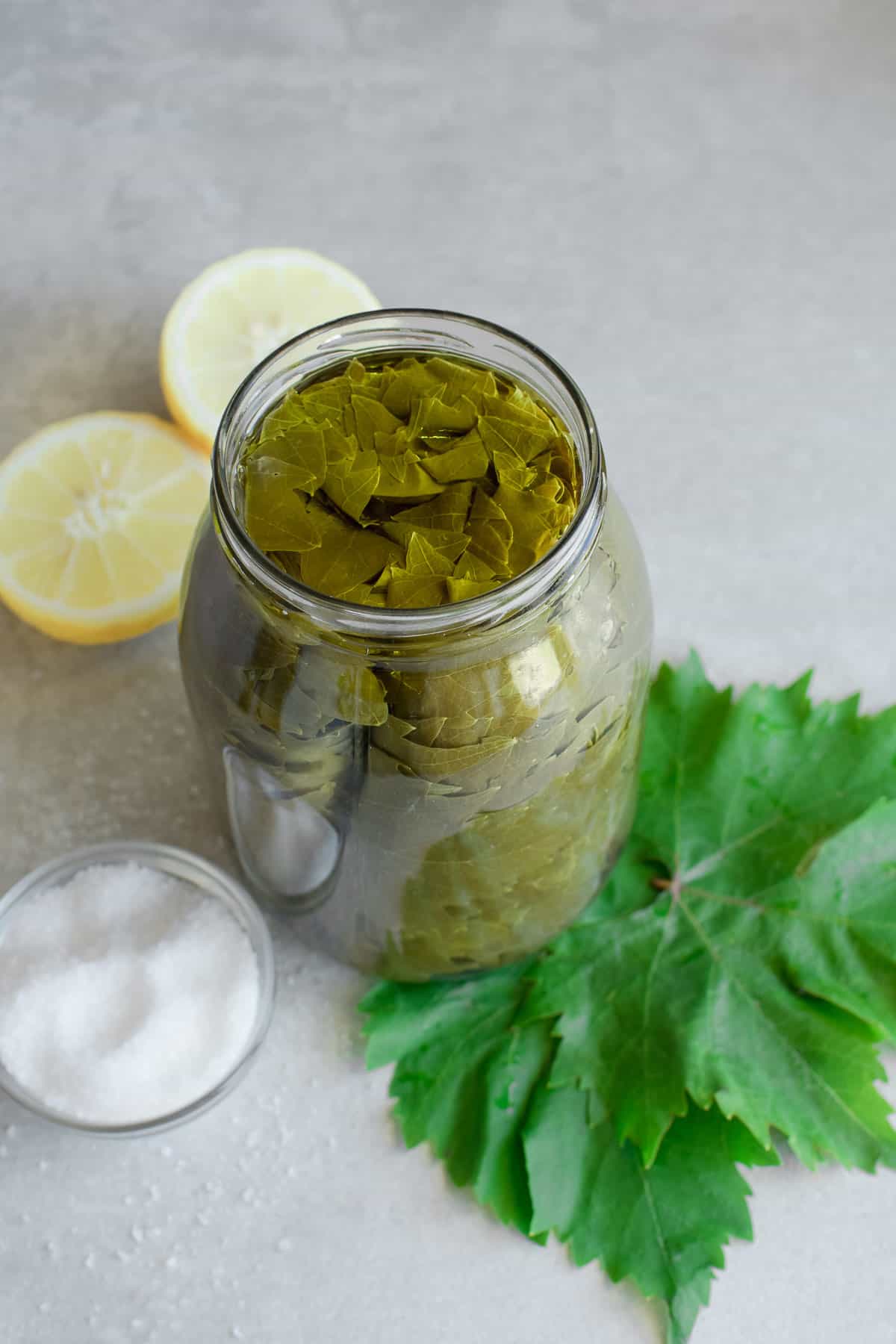
Recipes To Use Them In
The most popular dish to make using grape leaves is Dolmadakia of course. Stuffed with rice and fresh aromatic greens. In some areas in Greece, they stuff them with ground meat (like ground lamb). Another popular dish in Greece made with grape leaves is fish wrapped in grape leaves.
Recipe
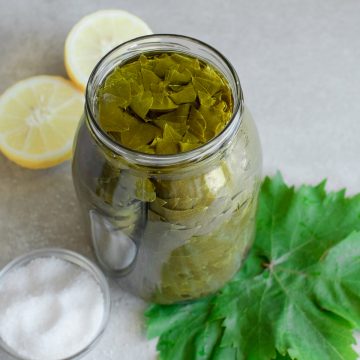
How To Preserve Grape Leaves In Brine
Ingredients
- 65-70 grape leaves
- 1 liter canning jar
- 6 tablespoons red wine vinegar
- 1 tablespoon kosher salt
- 1 tablespoon fresh lemon juice
- olive oil
Instructions
- Sterilize jars
- Soak the grape leaves for 10 minutes, in plenty of water with 2 tablespoons of red wine vinegar added to it. Then transfer leaves to a strainer.
- Fill a large cooking pot or stock pot with water and bring to a boil. Add 3 tablespoons of red wine vinegar. Once the water comes to a boil add the leaves and cook for 2 minutes from the moment the water starts to boil again.
- Using a slotted spoon, transfer the leaves to a very large pot filled with very cold water. Let the leaves cool completely. Then transfer leaves to a strainer in stacks of 10 or 15 leaves. With the bottoms right on top of the other.
- Take one stack of the leaves and gently squeeze them inside the palms of your hands to release any leftover water. Then place the stack on your working surface with the wrong side of the leaves facing upwards. Roll them tightly and place them inside the jar.
- Repeat this process for the remaining stacks of leaves.
- In a measuring cup add the remaining 1 tablespoon of red wine vinegar, kosher salt, and lemon juice. Add 200 ml of hot boiling water and mix well until salt dissolves. Then pour this brine into the jar with the leaves. Make sure you leave some space on top so it won't touch the jar's lid. NOTE: If you're using a larger jar and the brine isn't enough, just make another batch or half a batch of it. Always keeping the same salt-acid ratio.
- With a spoon press the leaves to sink under the brine. Then add a thin layer of olive oil on top to float on the surface and act as a protecting shield against microorganisms. Close the jar and keep it inside a dark cupboard for up to a year.
YOU MAY ALSO LIKE...

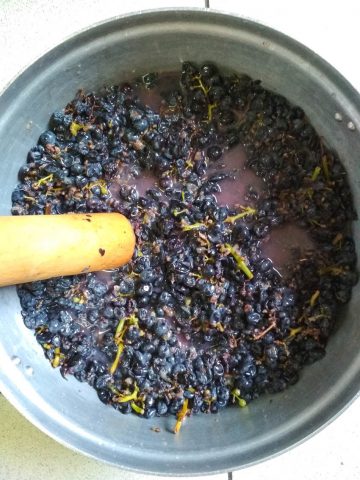
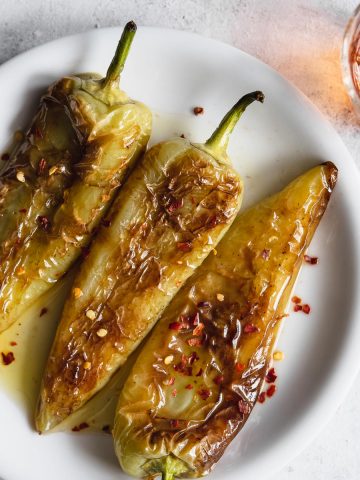
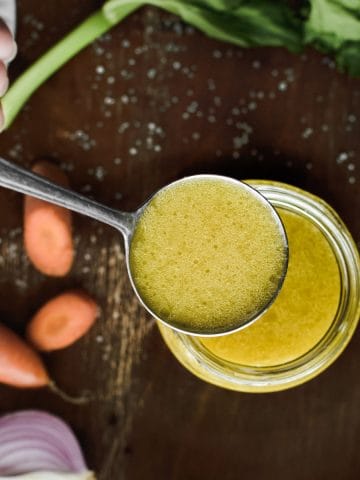
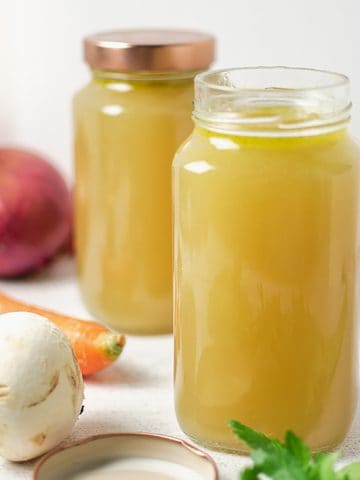
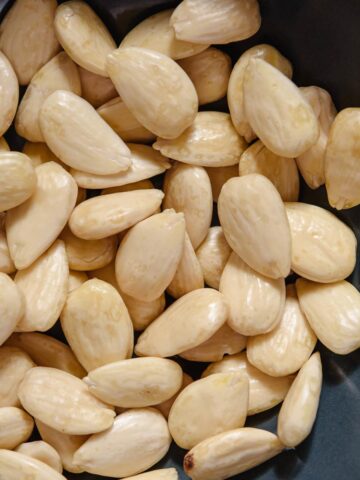
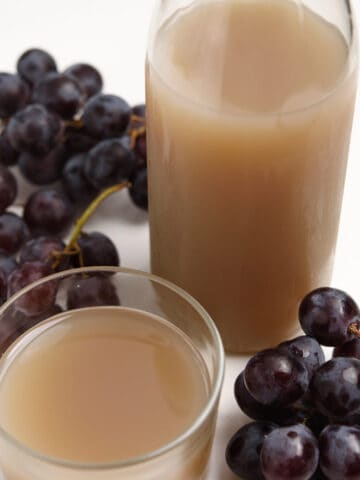
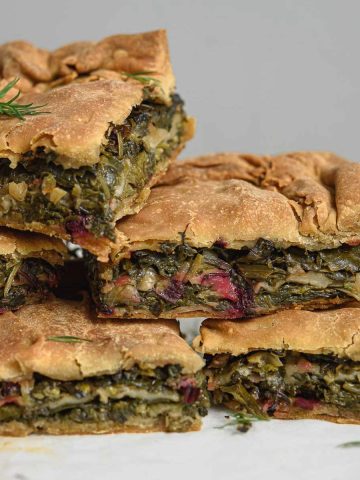
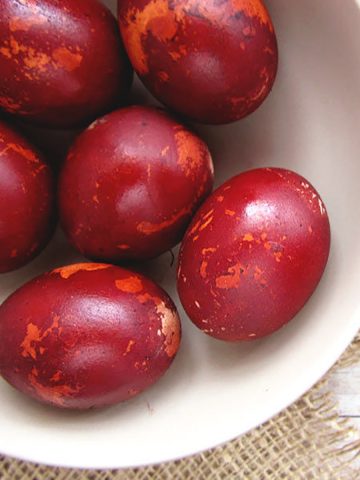
Leave a Reply